Greenway
Fostering a Curiosity for Nature.
Incorporating outdoor activities into educational curriculum is essential in developing a child’s learning, and should be implemented more frequently into the American education system. Indoor classroom models are leaving out an imperative and unavoidable truth that our relationship with and understanding of nature is important to living in a happy, healthy, and sustainable world. In attempt to highlight the rich beauty that nature offers and to increase appreciation and knowledge of local environments, this kit, the first of many themes, is designed for young K-8 learners to experience learning through active play, observation, and reflection.
These trading cards which feature 24 birds of Minnesota, were inspired by my older brother’s collection of Yu-Gi-Oh!, Pokémon, and baseball cards he had growing up. They’re meant to be a precious and collectible item for young learners and they also double as quick and handy reference cards for ready to go identification of observable birds.
Click on a card to view it up close, and be sure to scan the QR codes to hear the sounds of each bird!
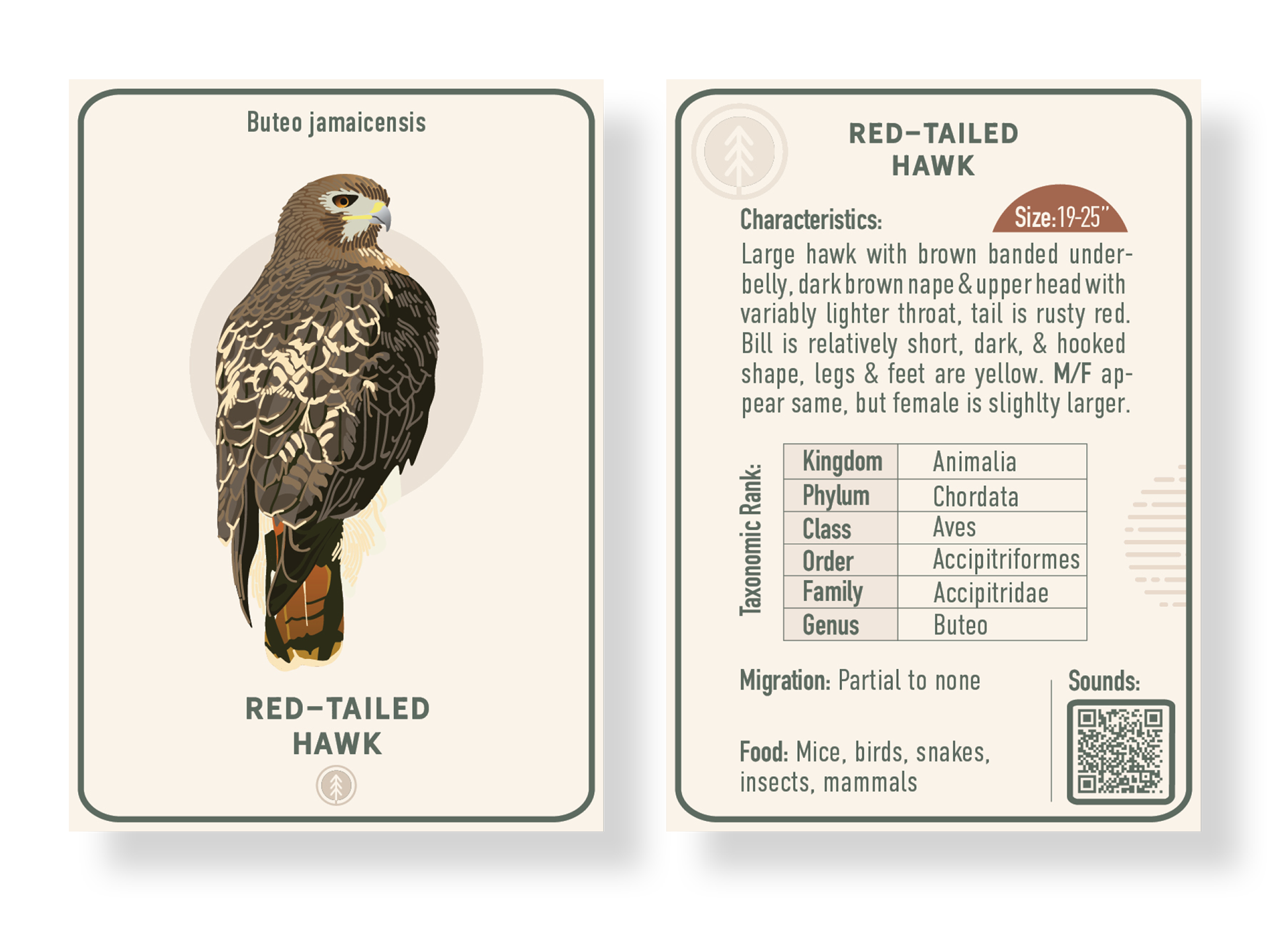
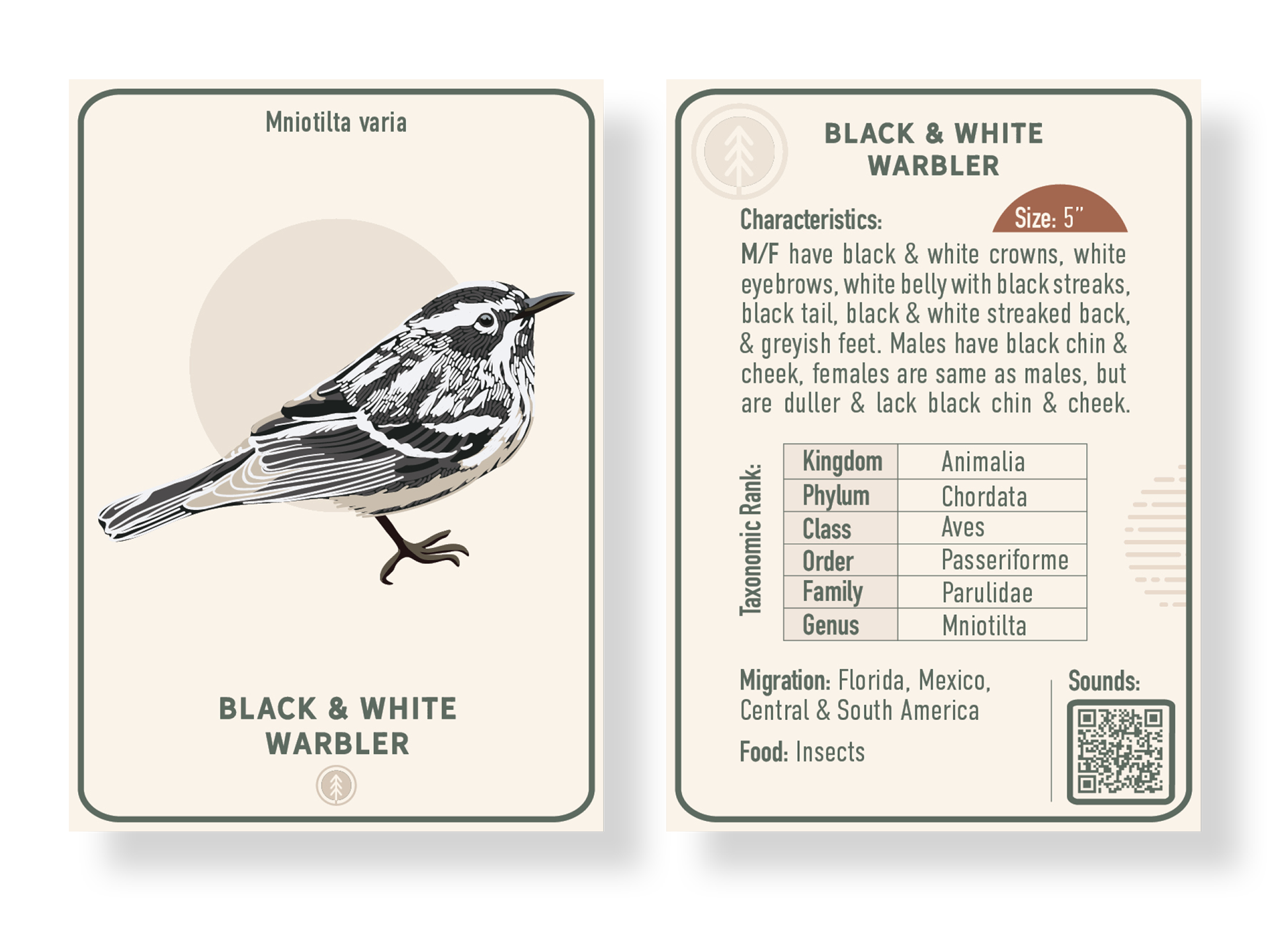
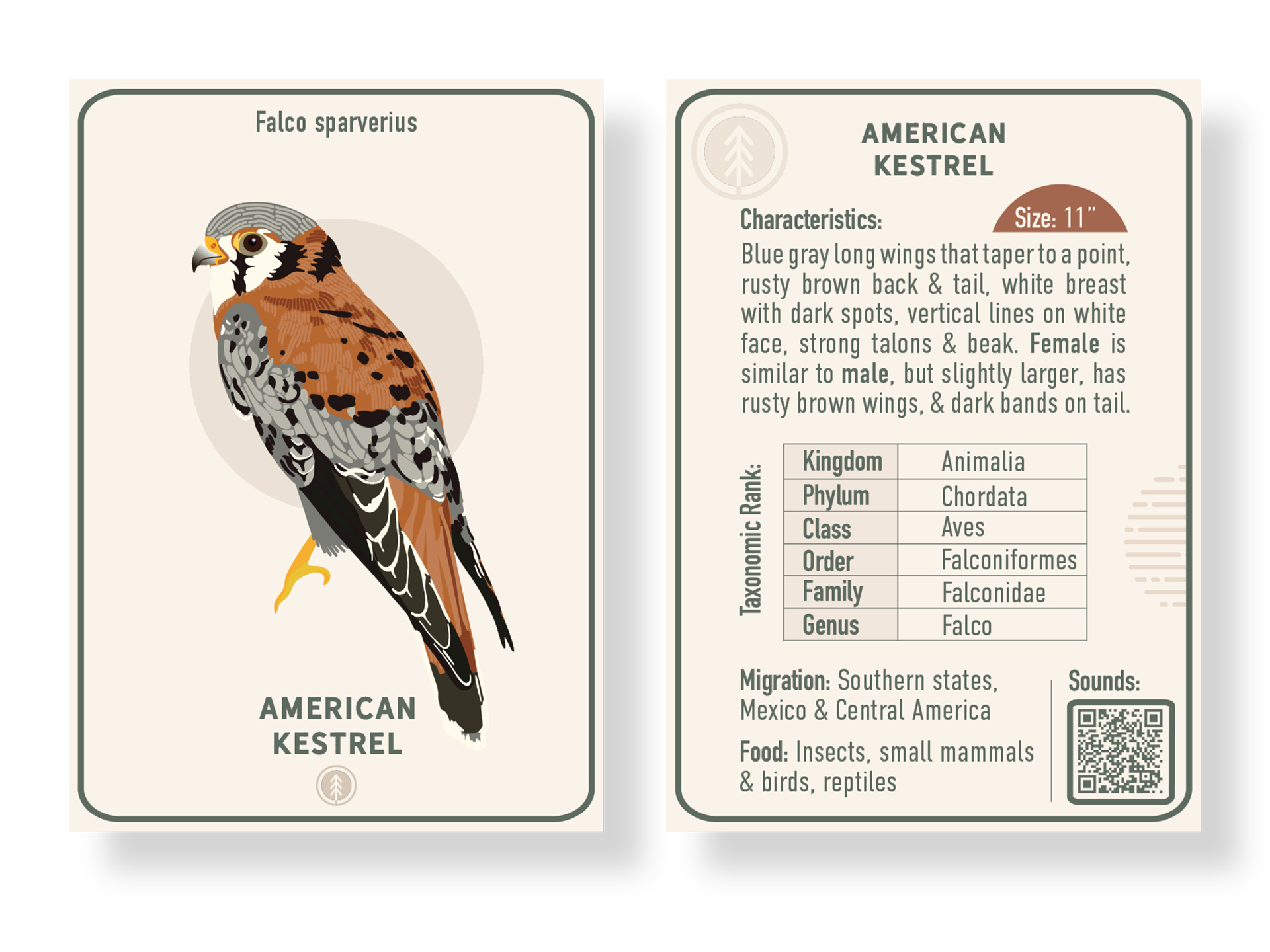
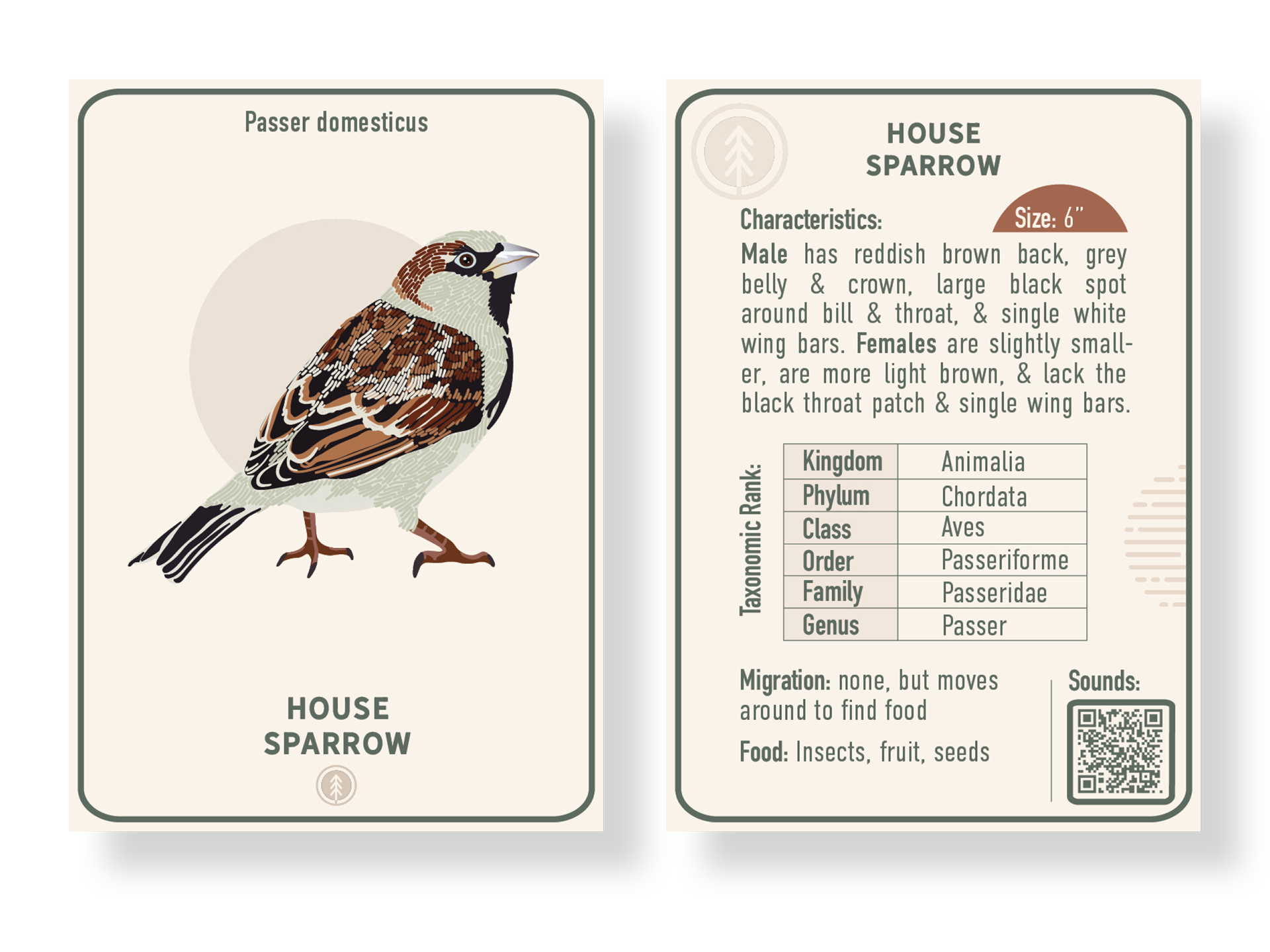
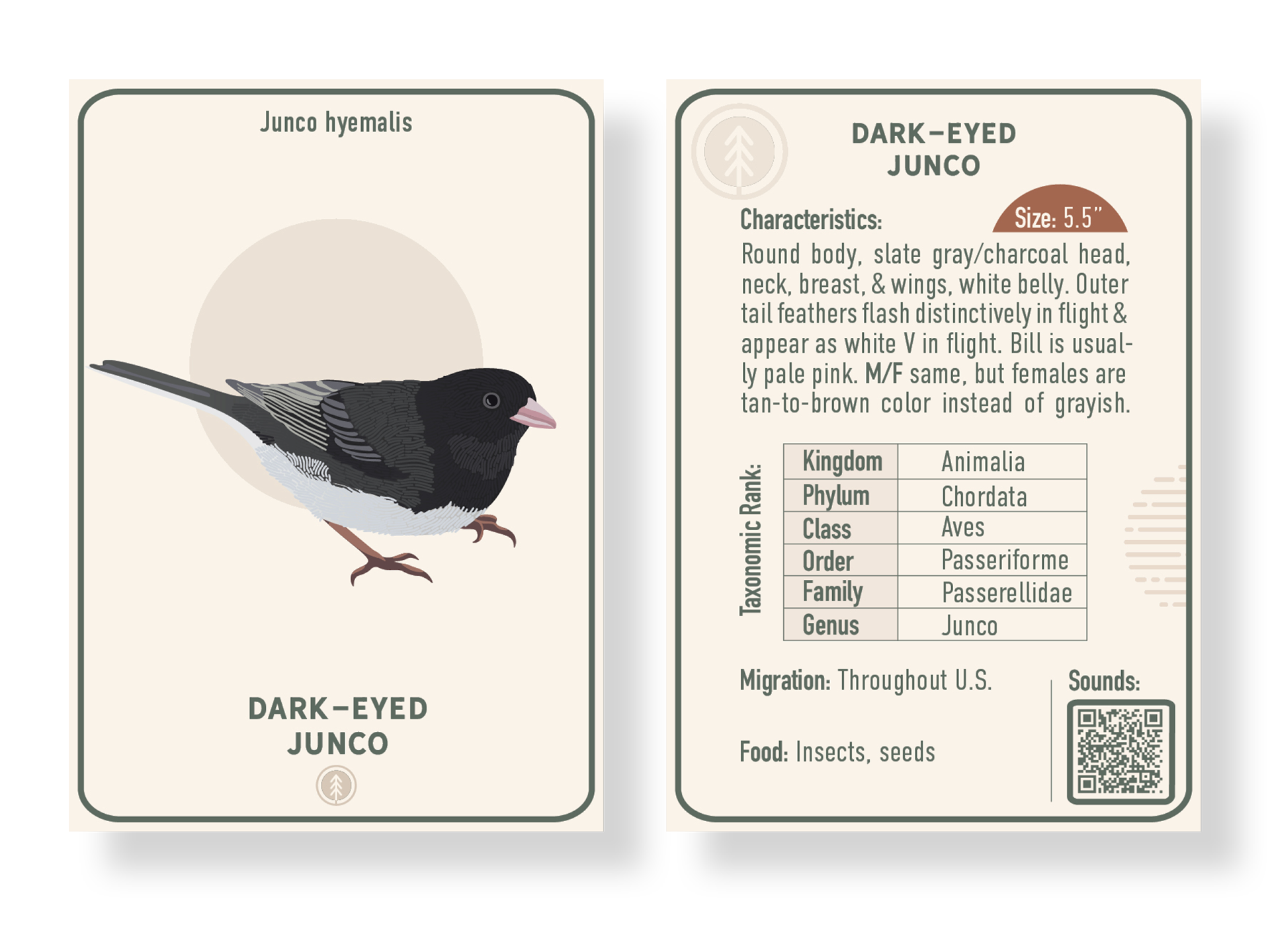
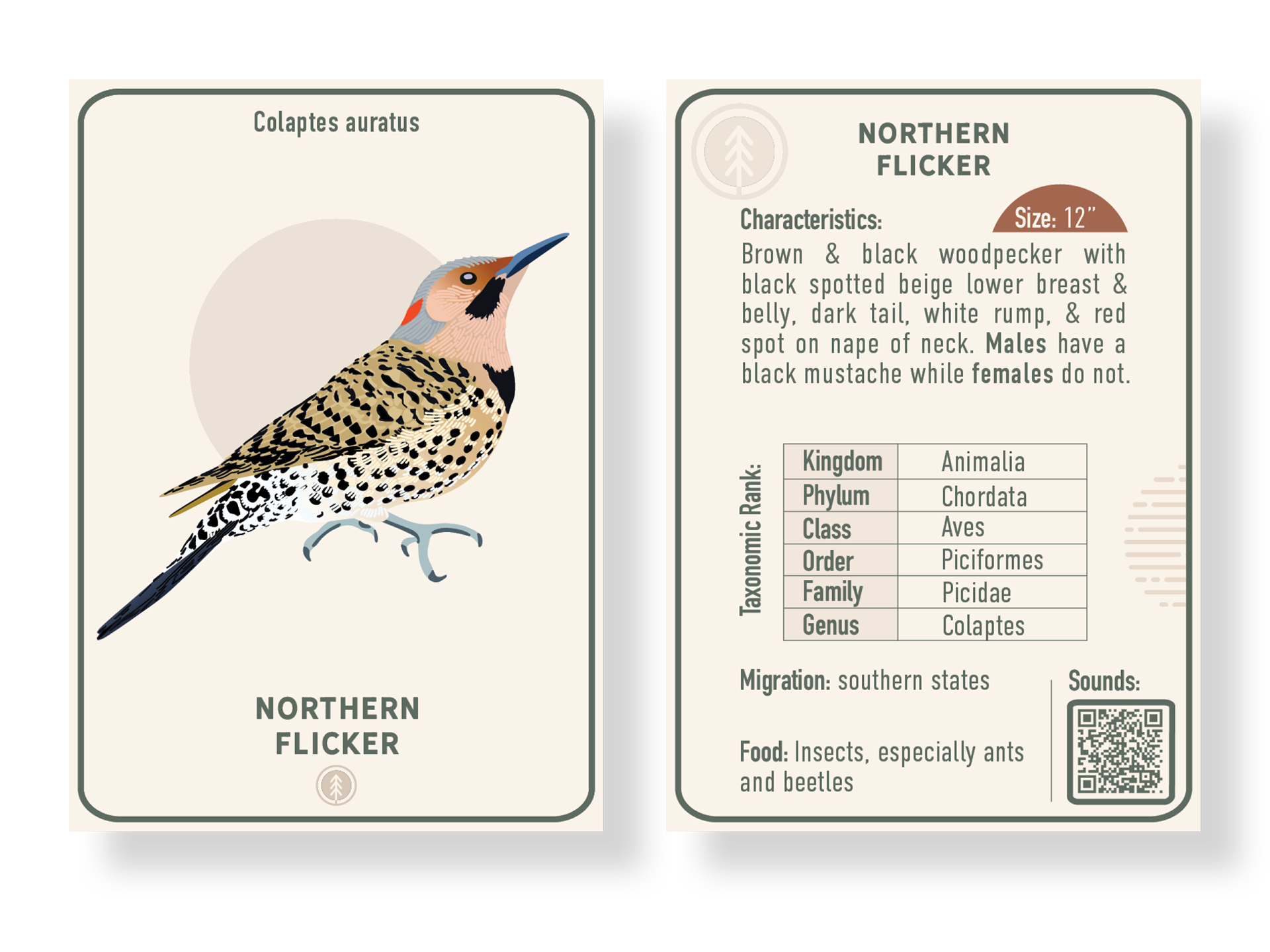
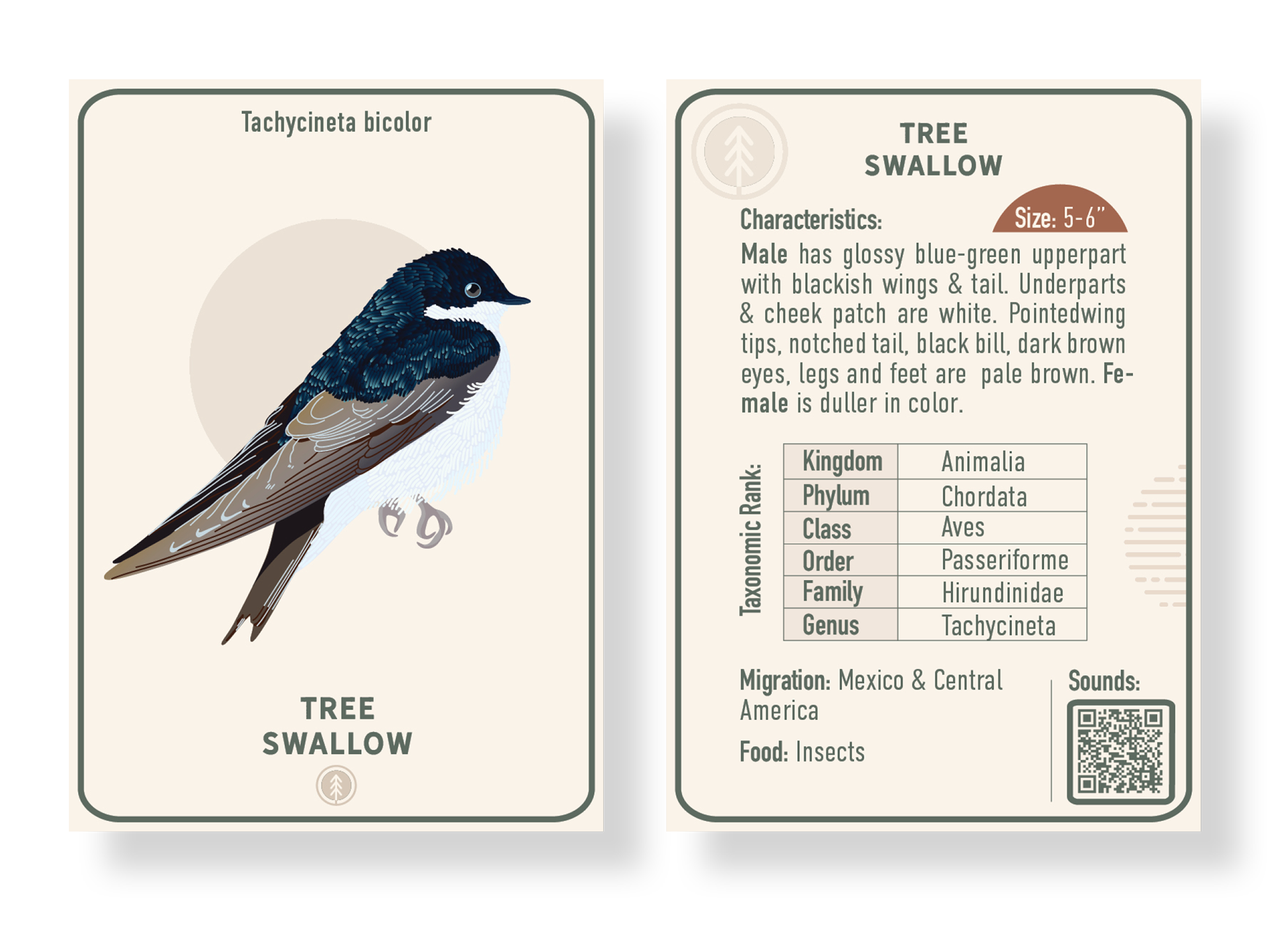
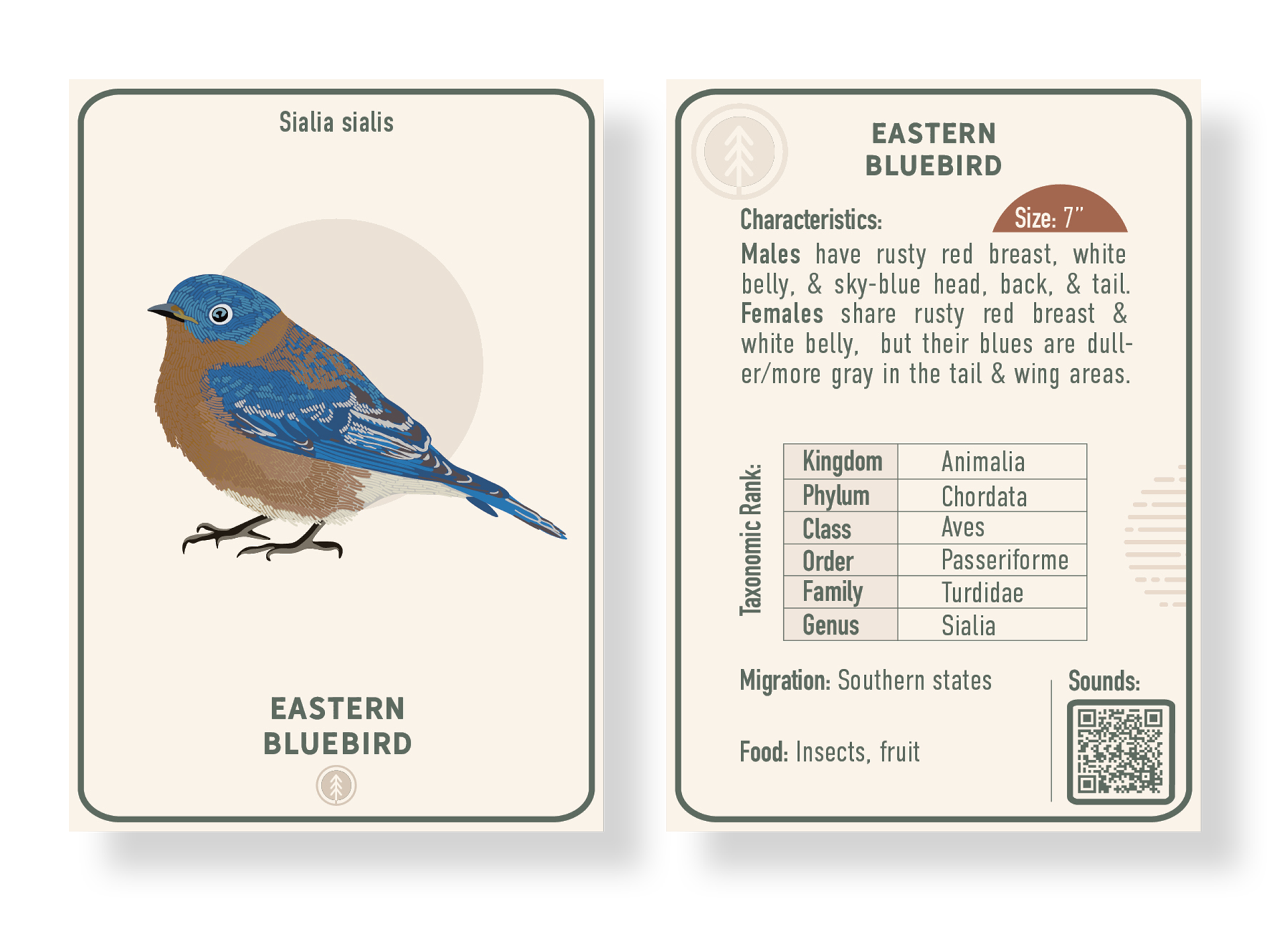
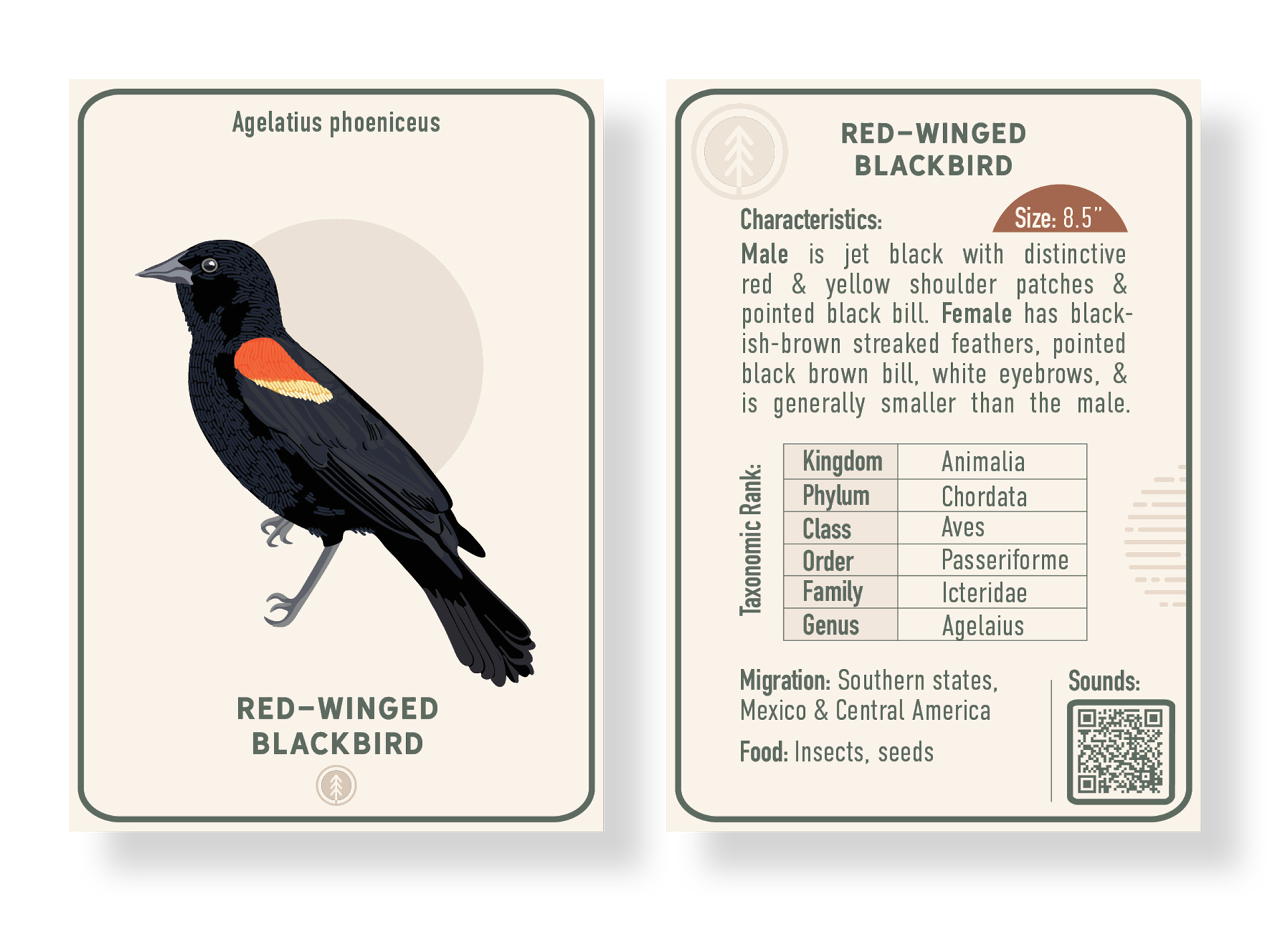
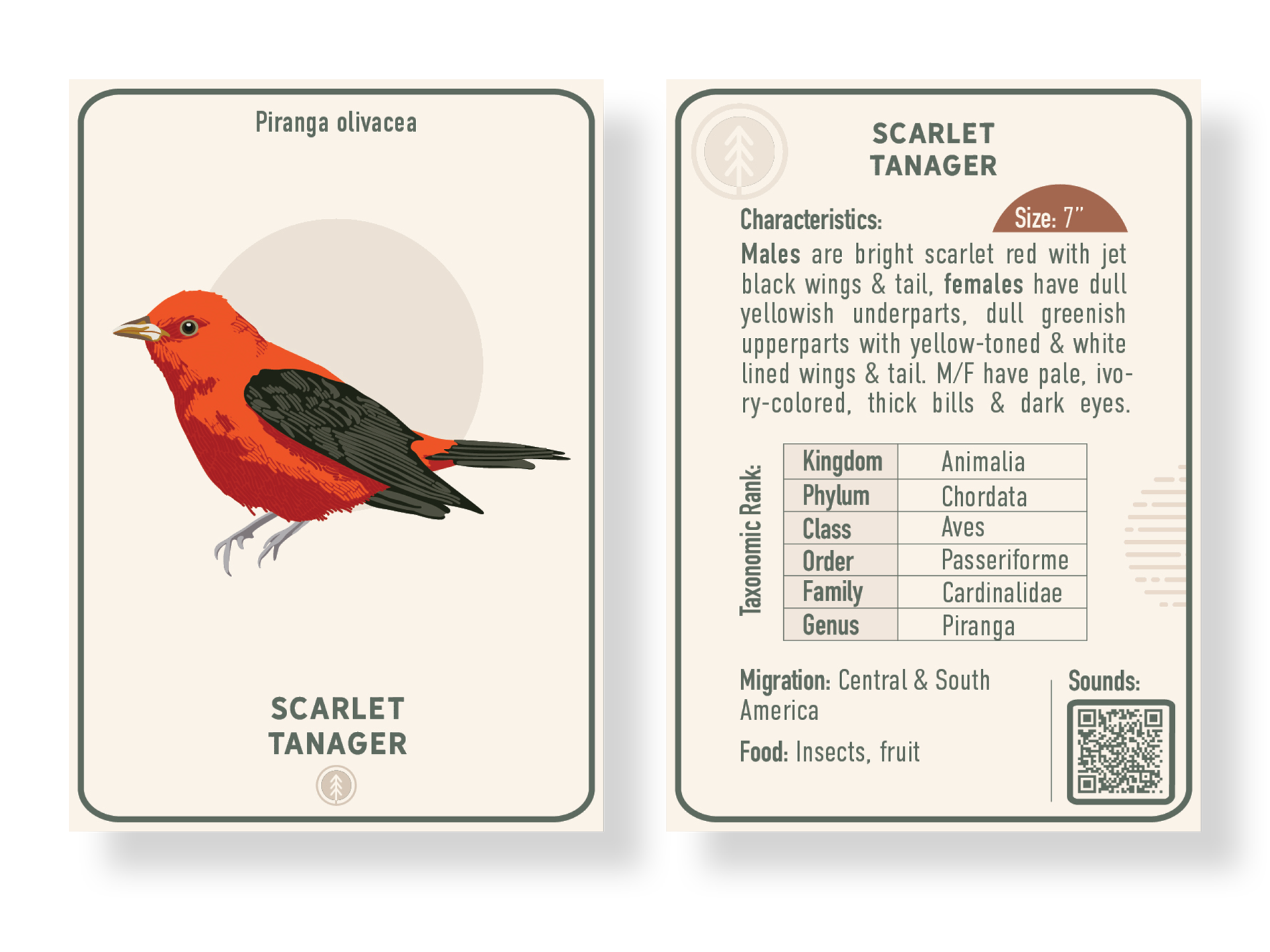
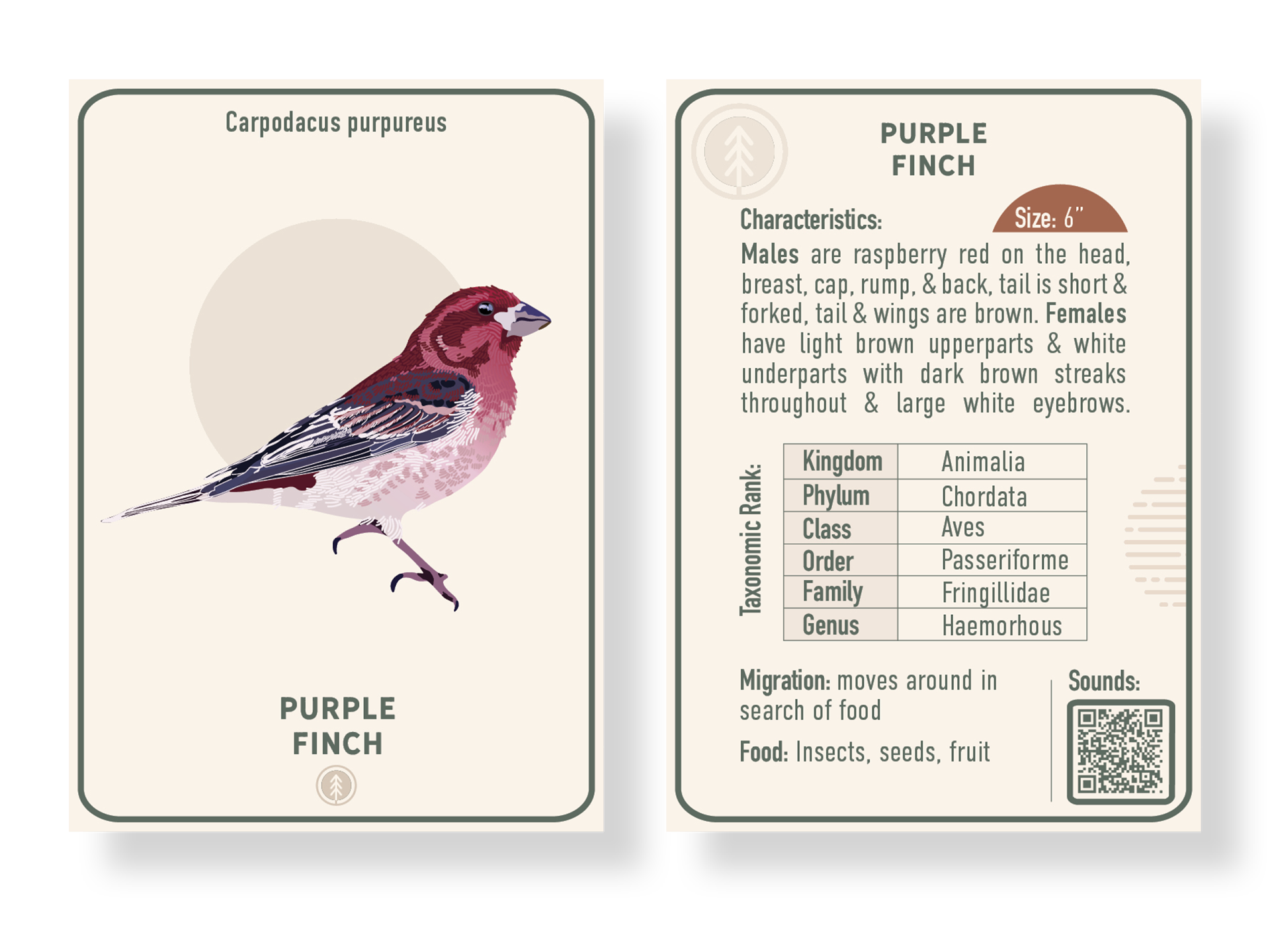
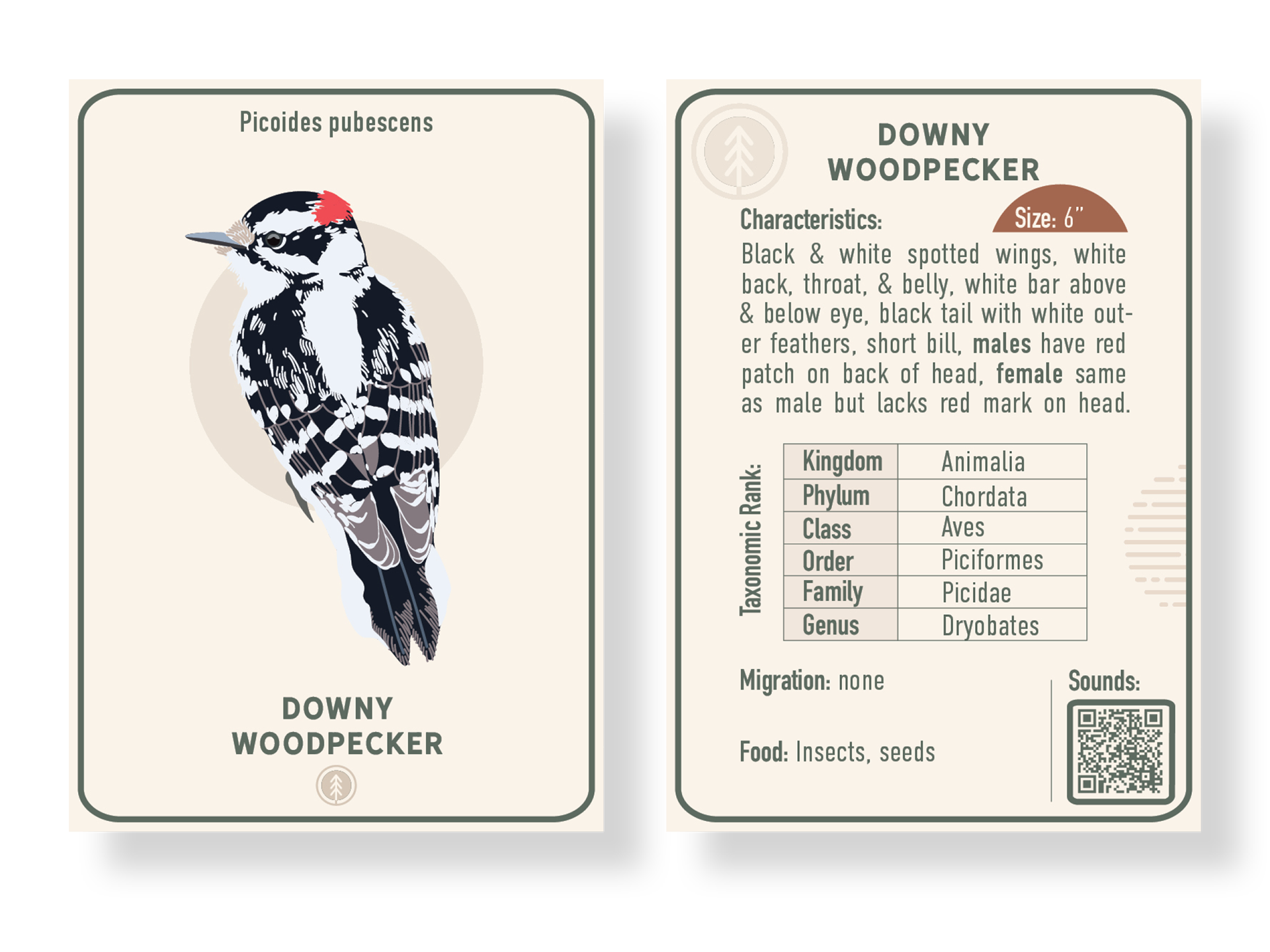
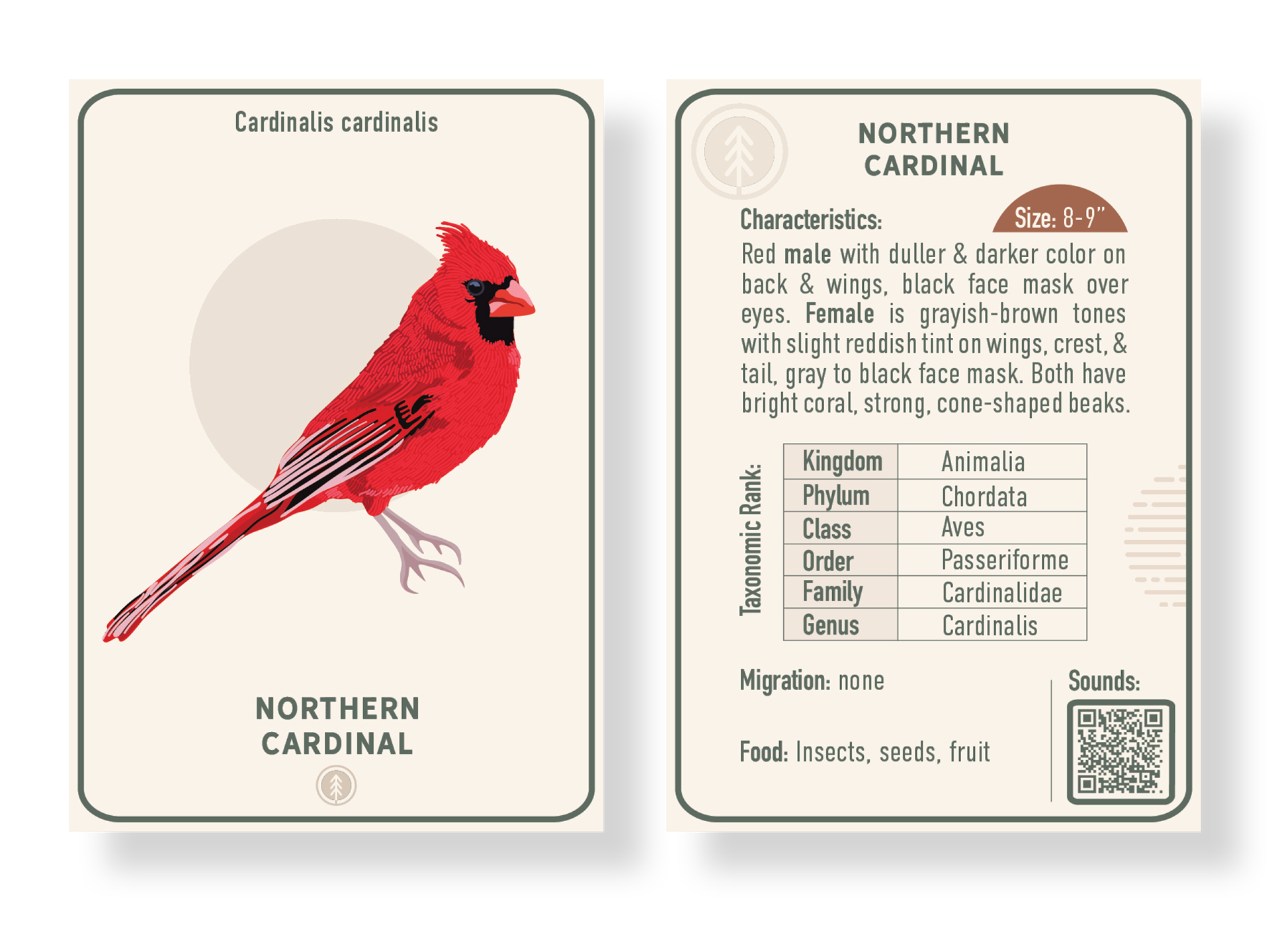
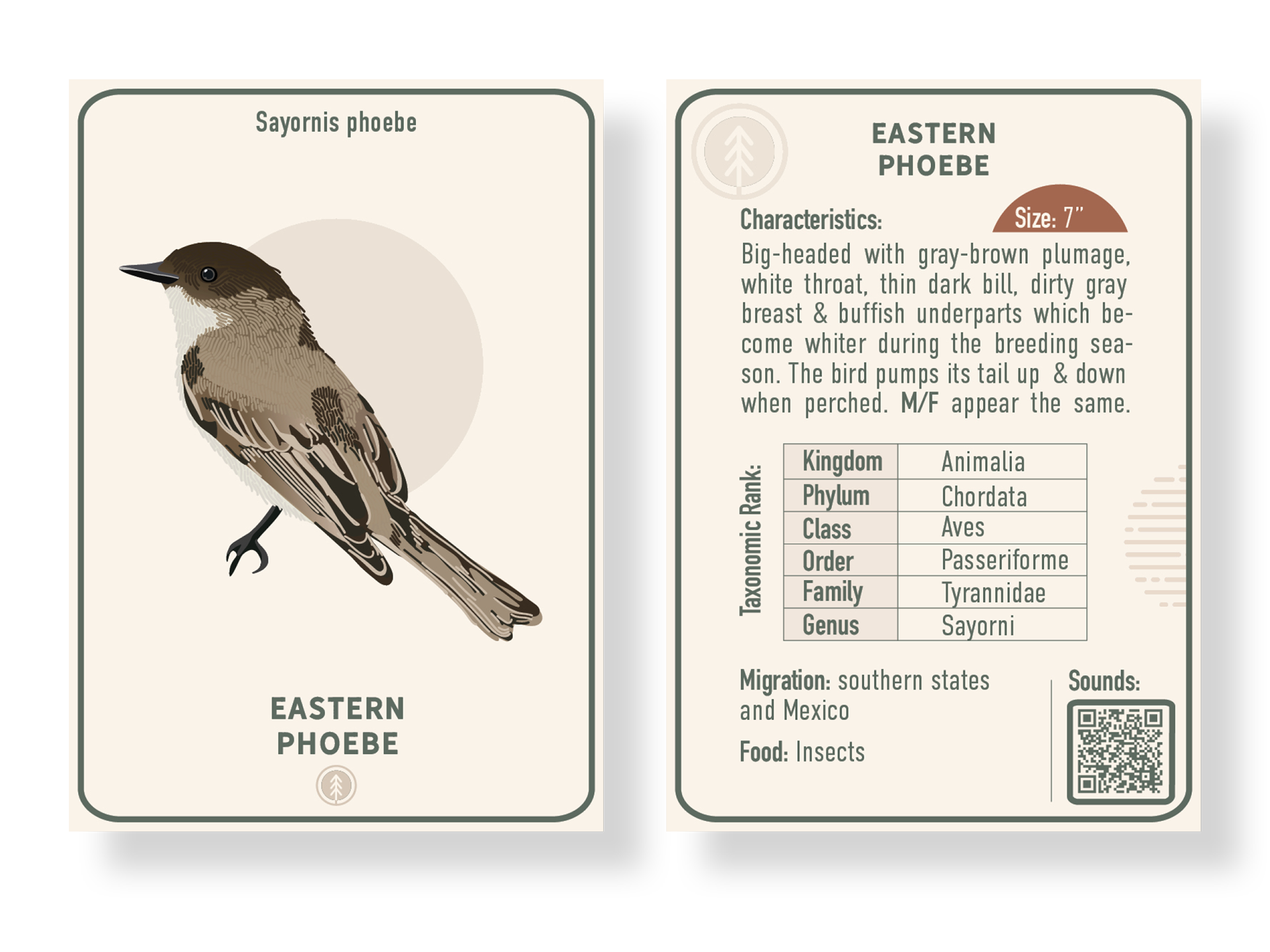
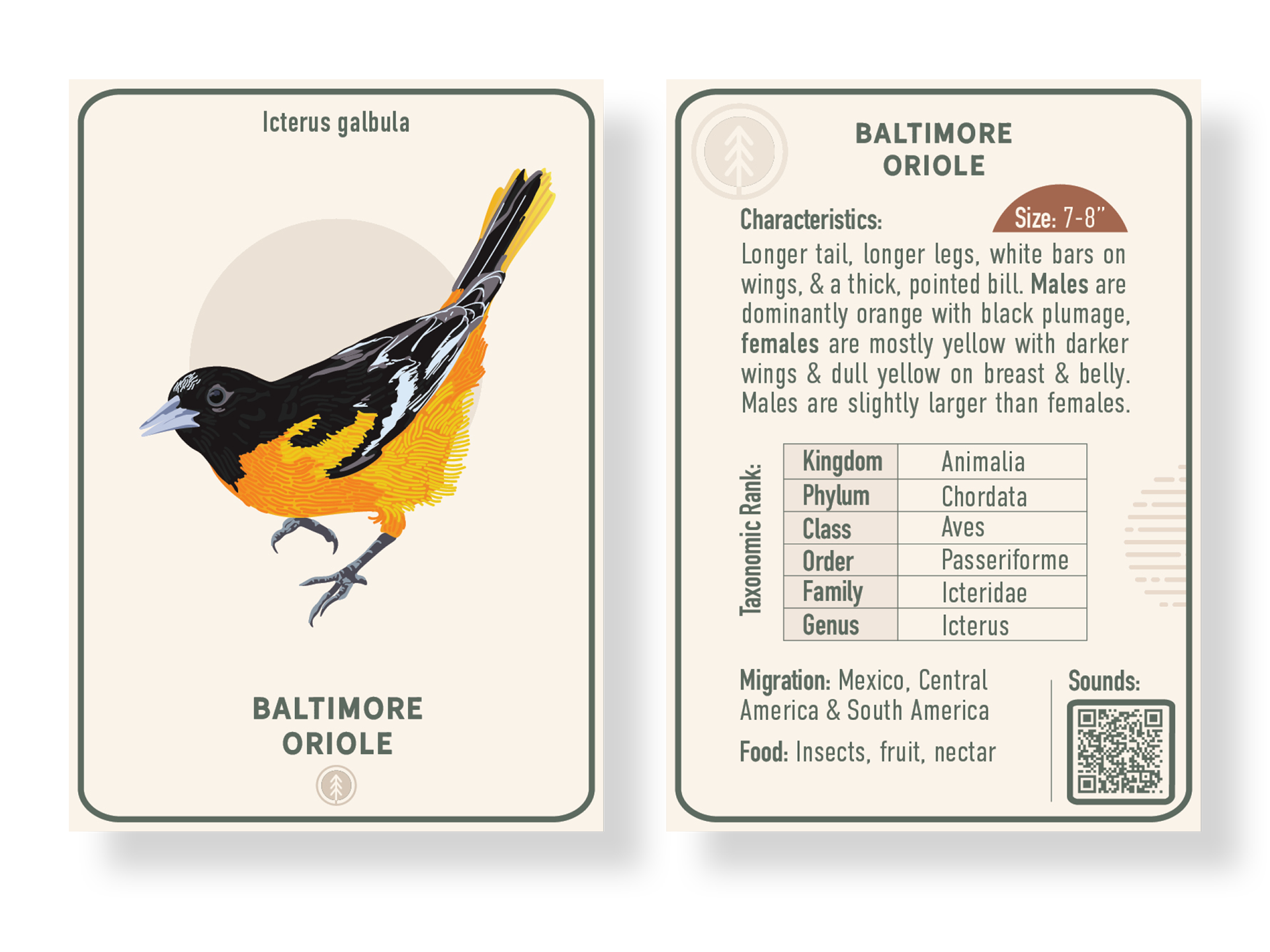
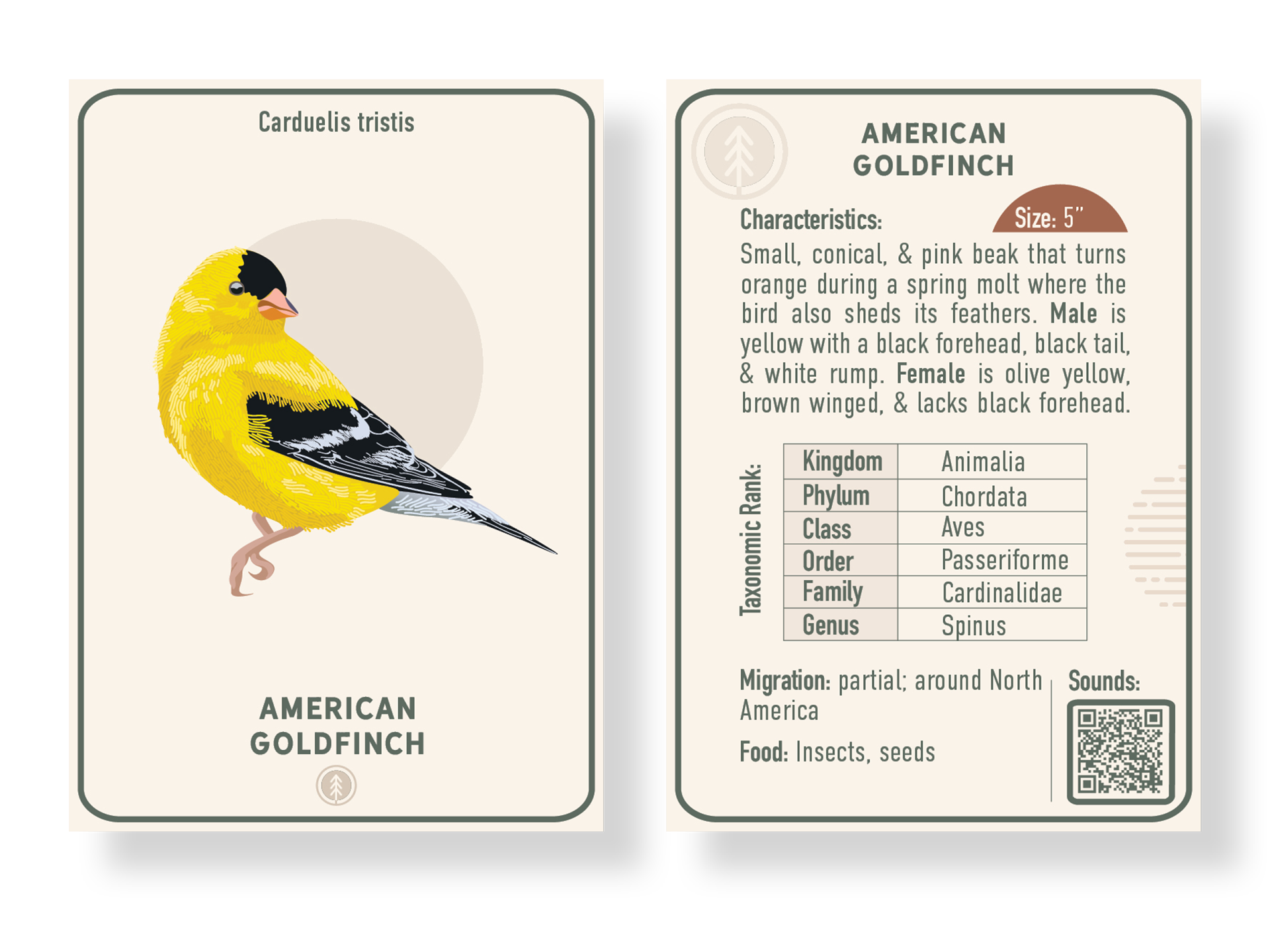
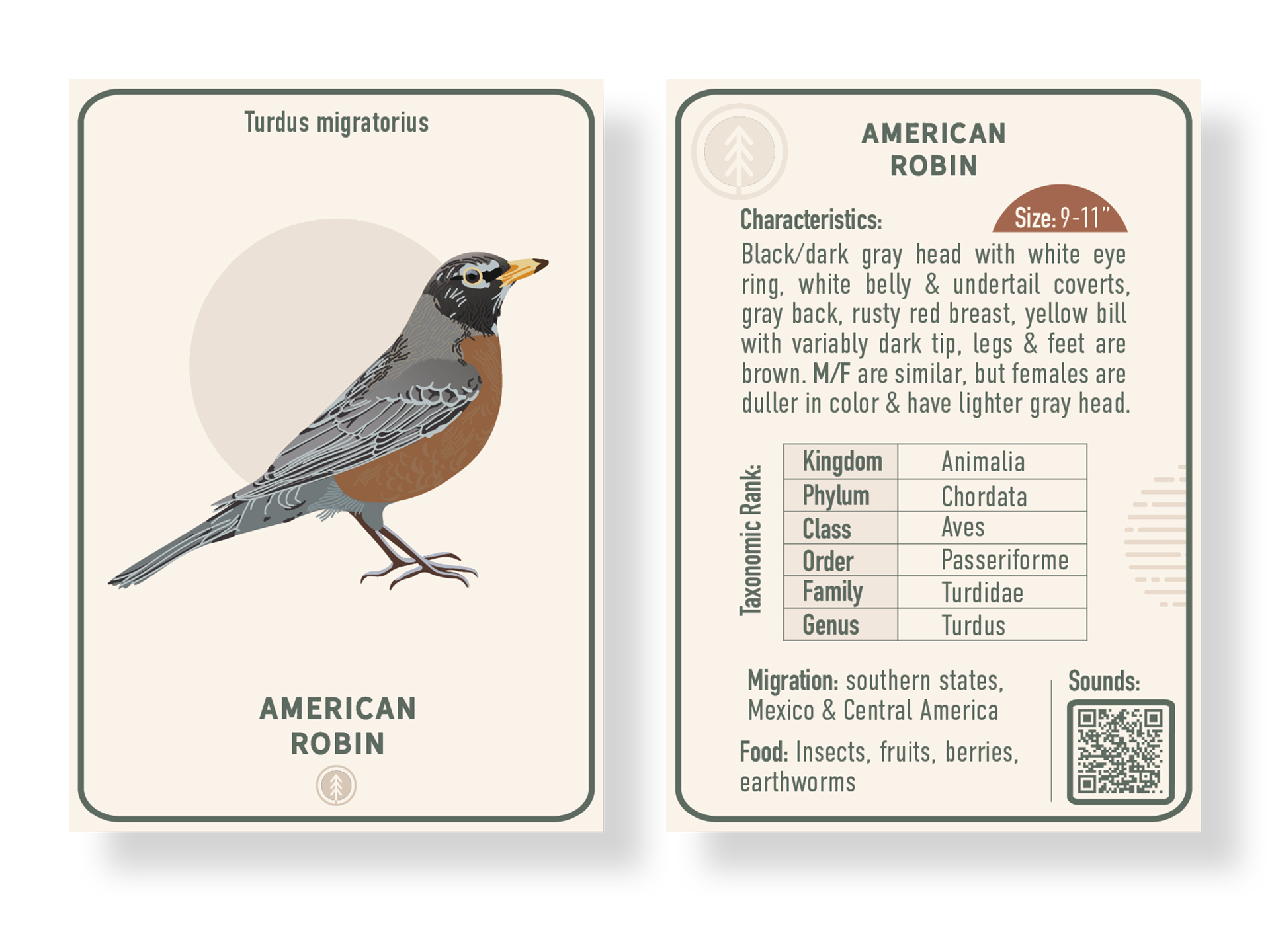
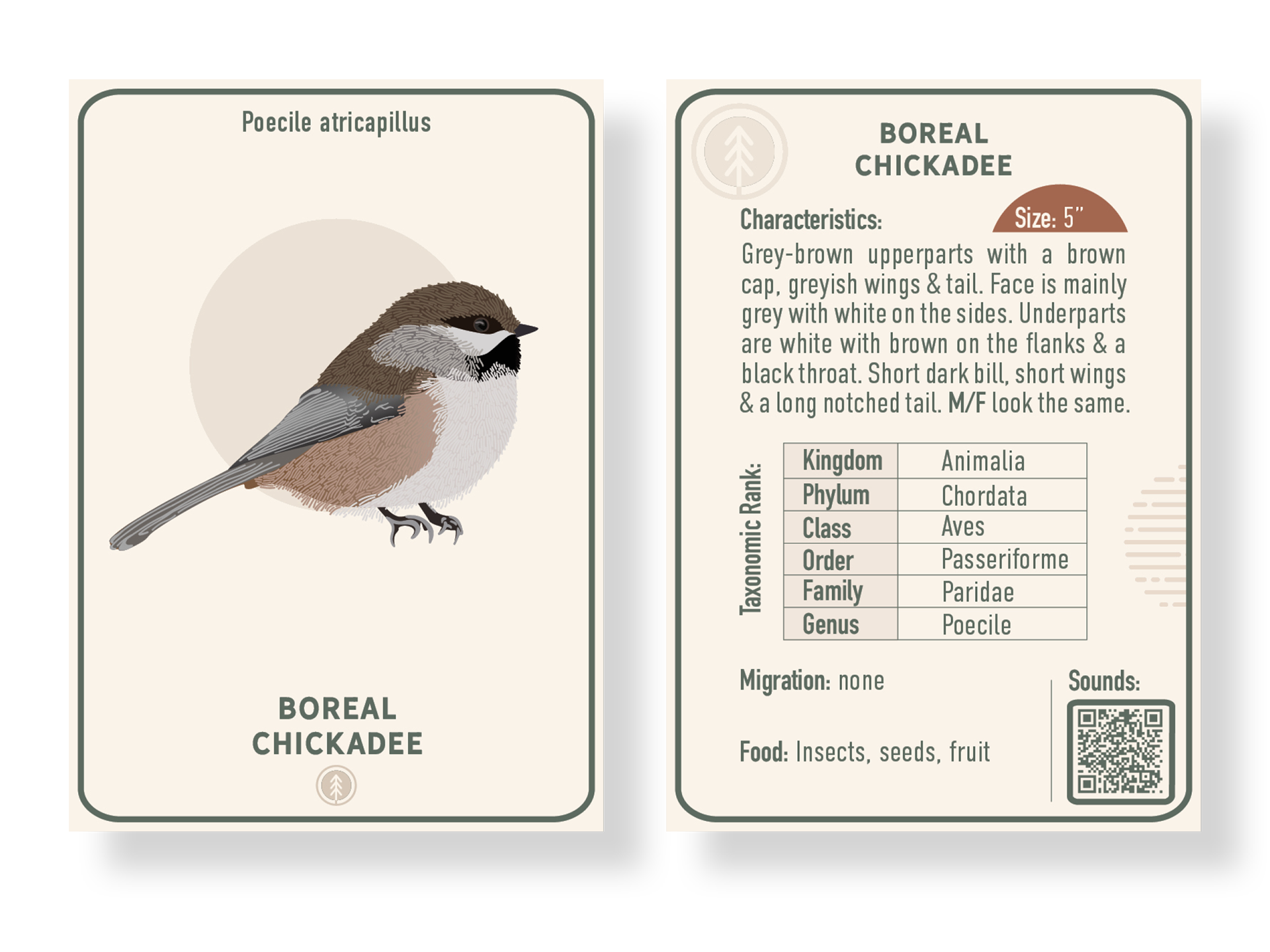
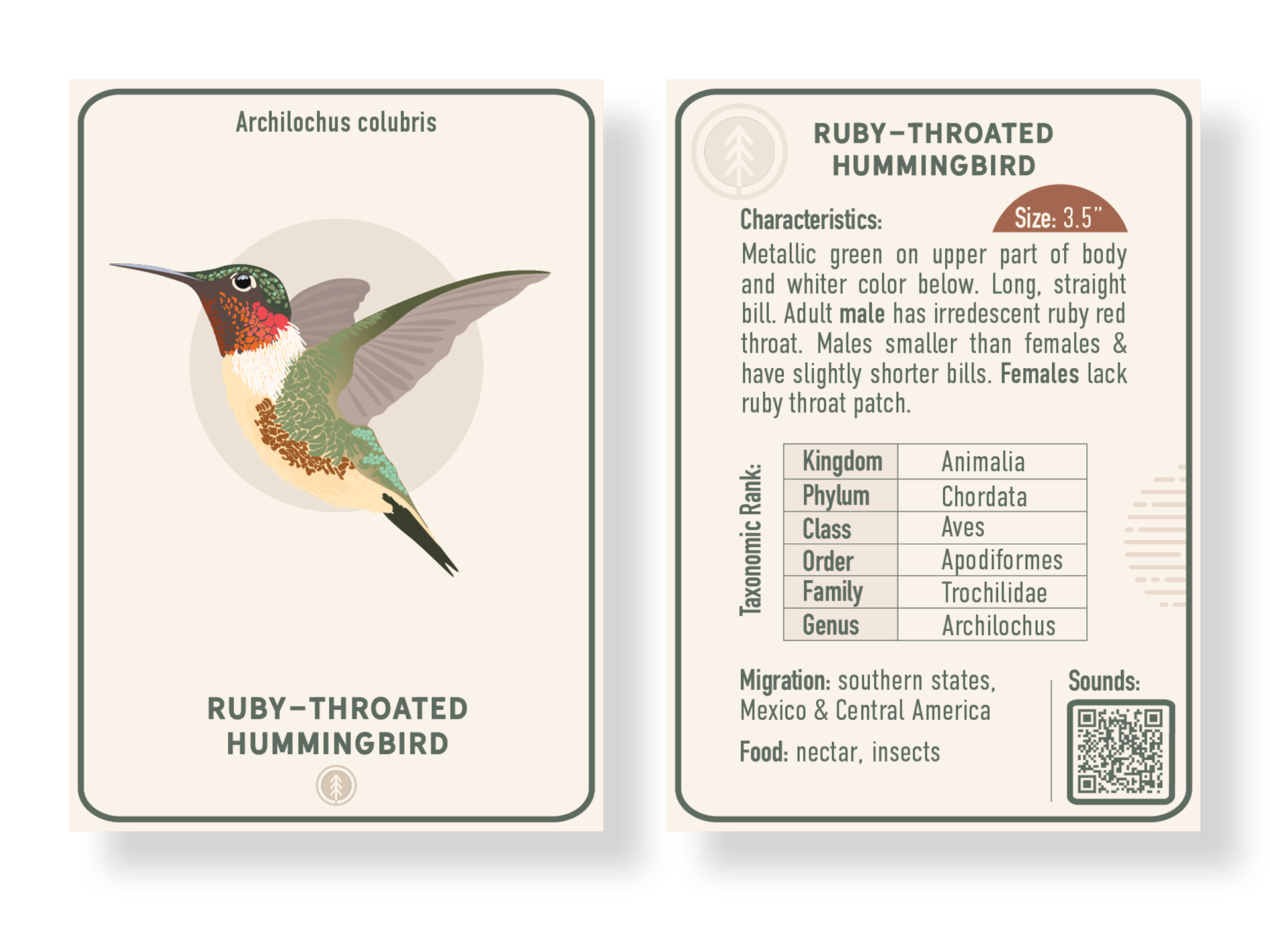
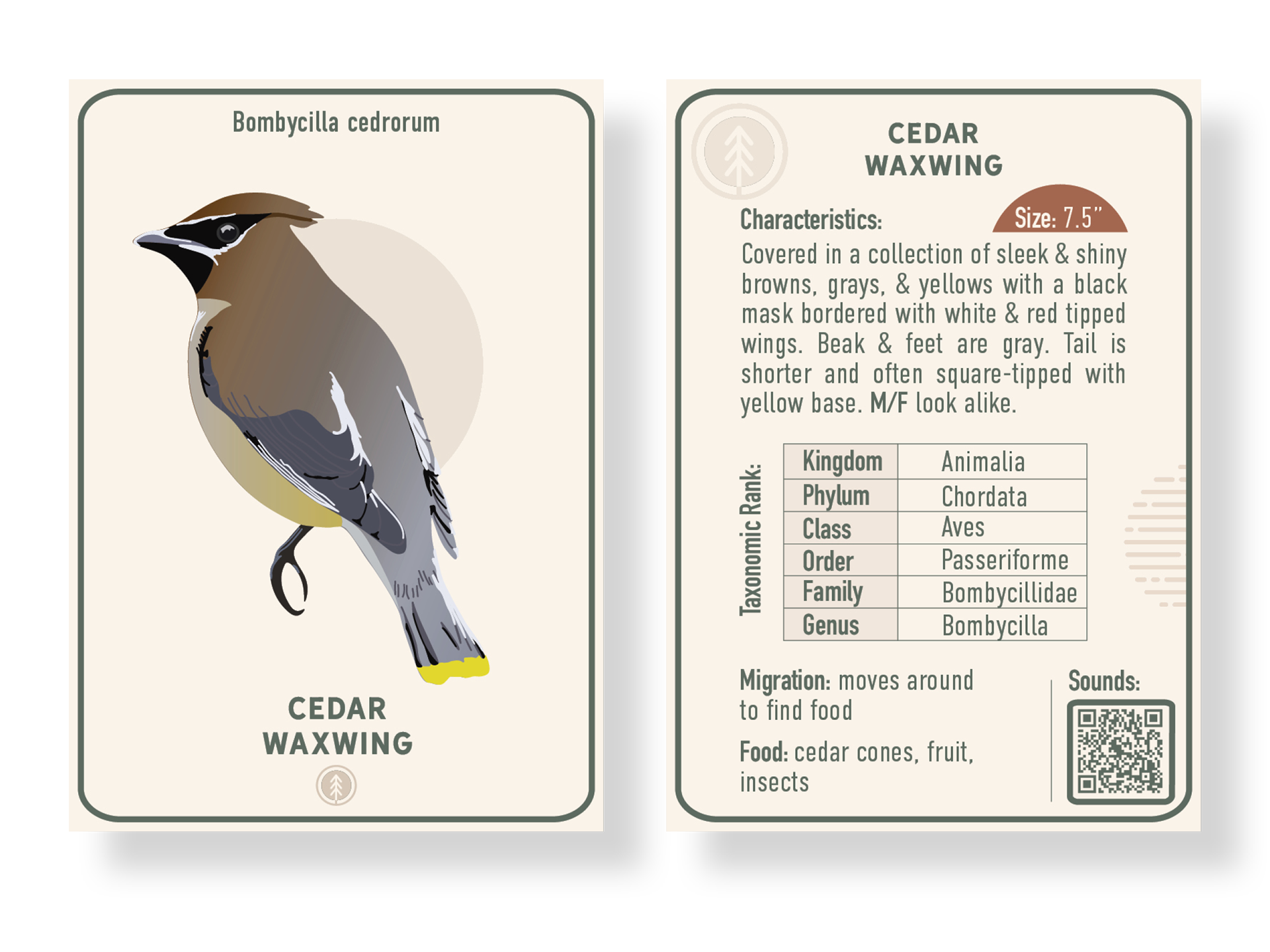
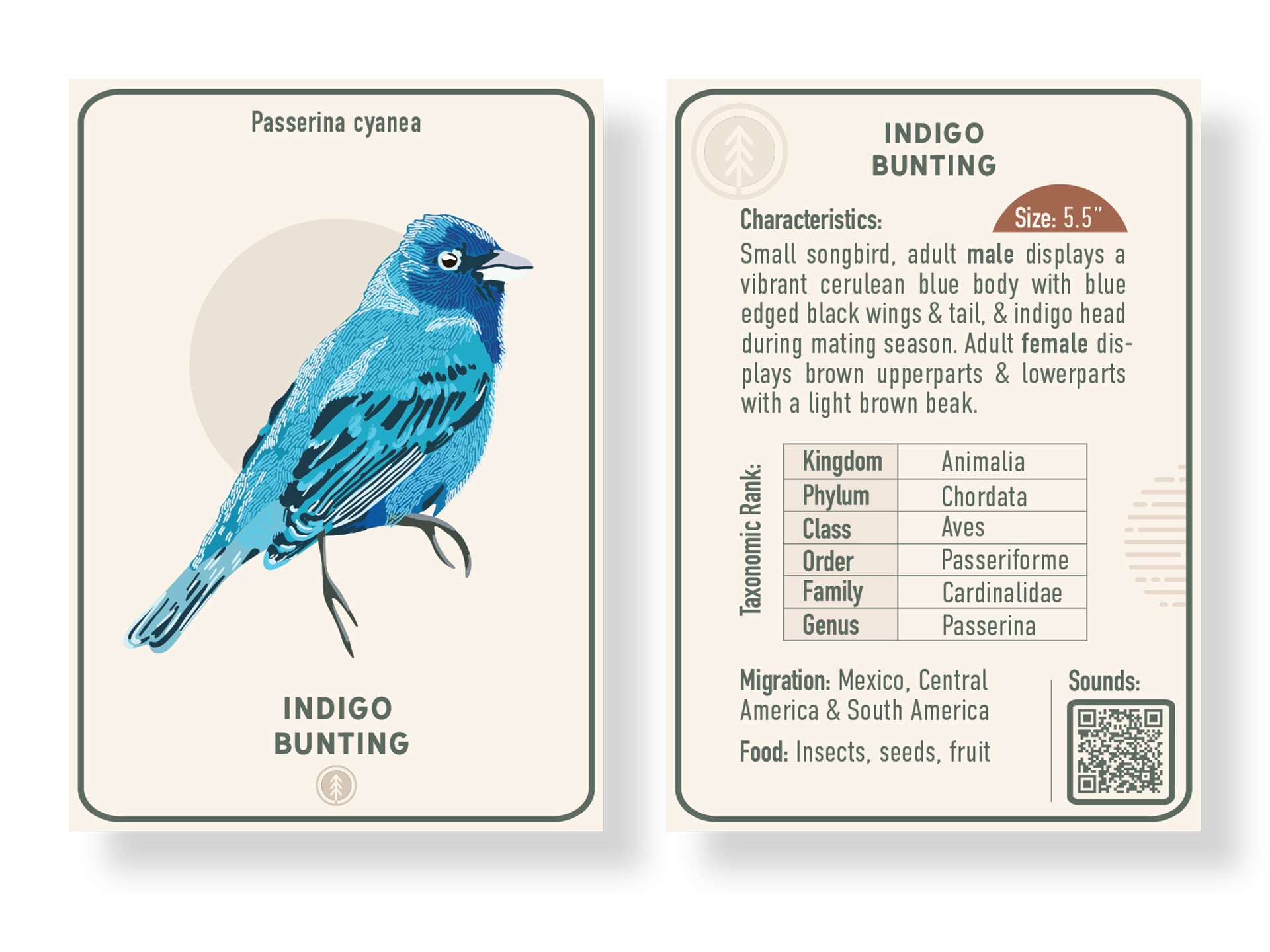
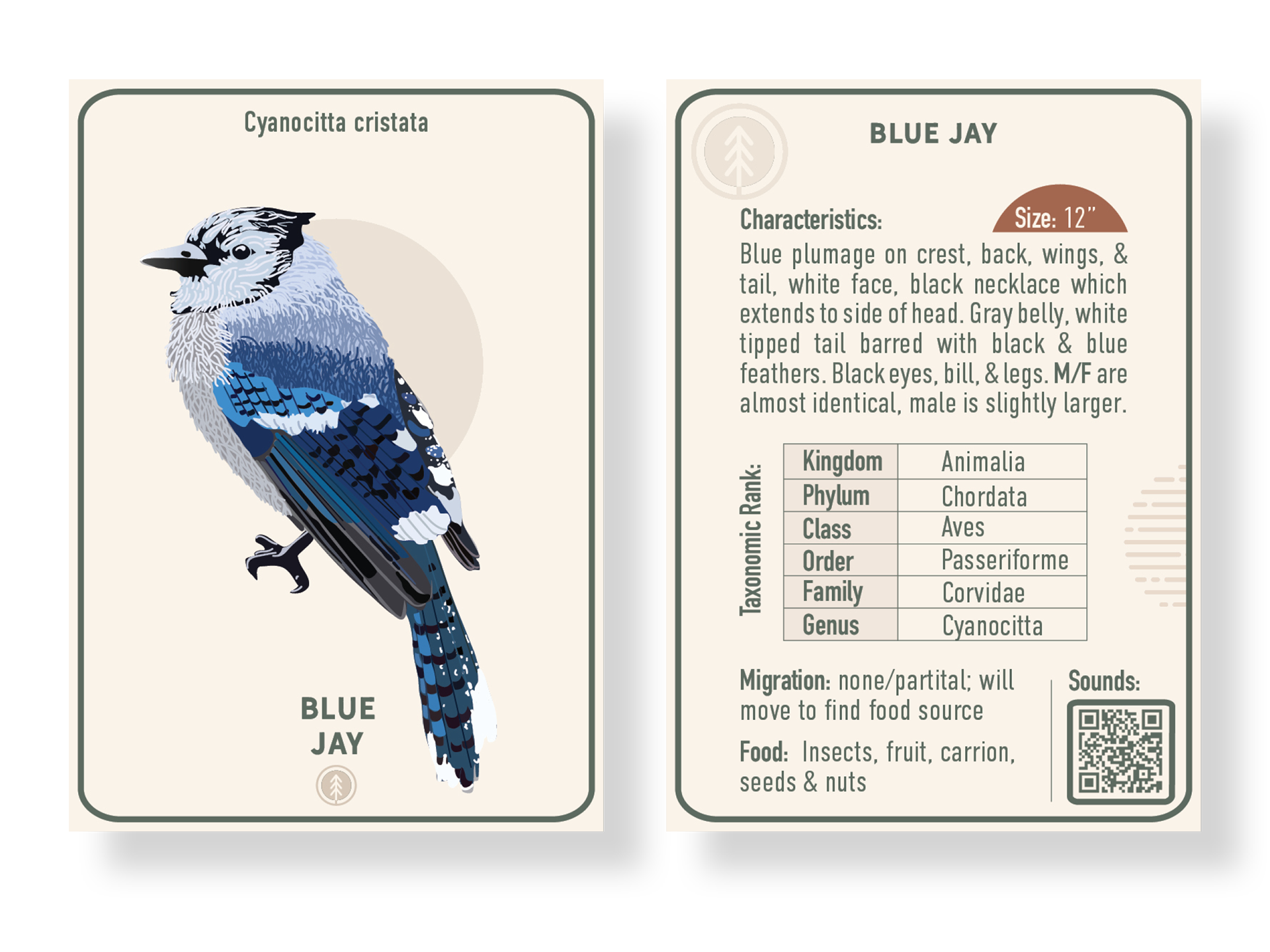
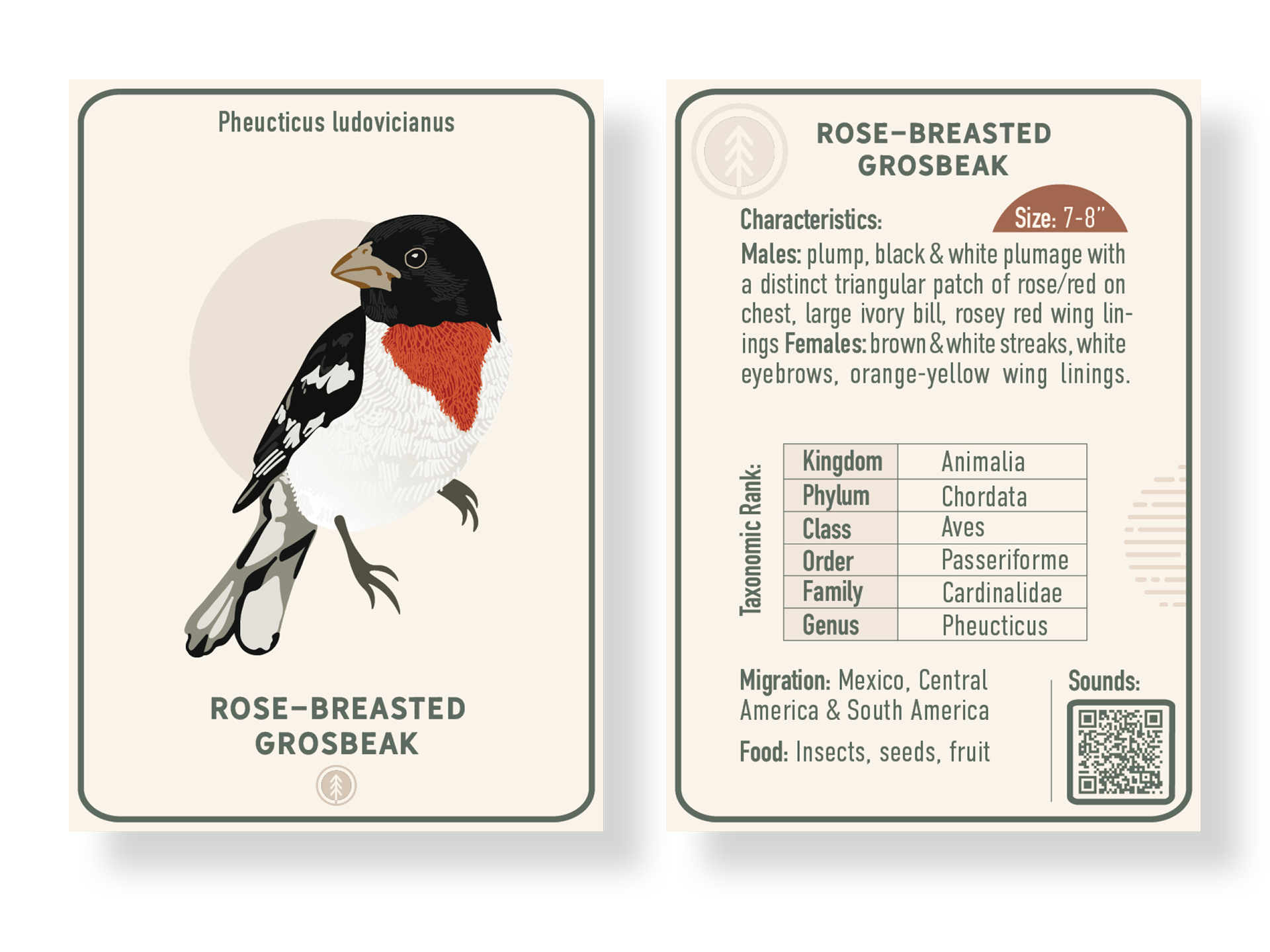
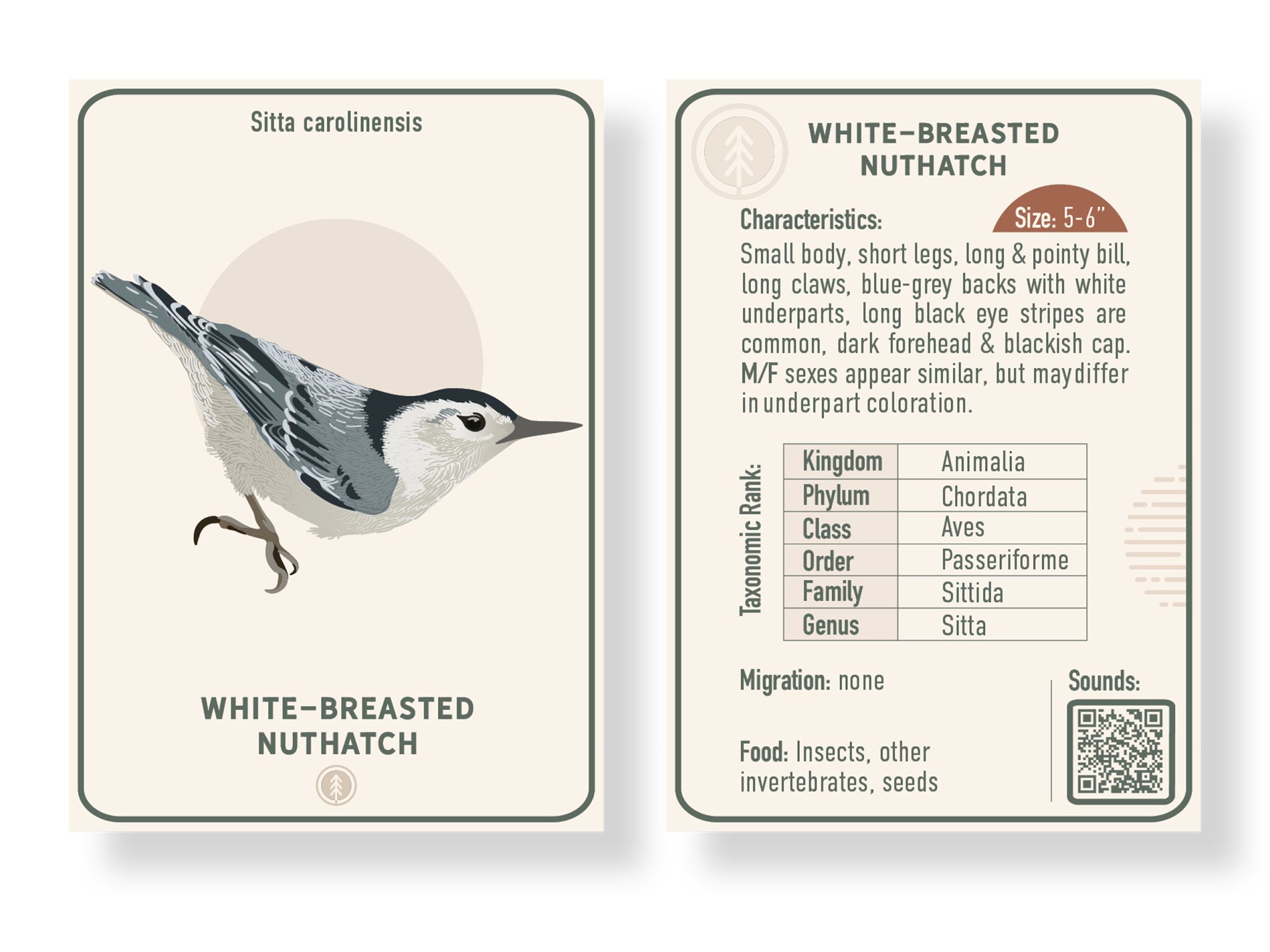
It was important for me to include versatile and multi-functional pieces in this kit, so I created “Bird Bingo” to pair with the trading cards.
Inspired by the “Loteria” game I used to play as a child, this bingo game encourages learners to find their own game pieces from the wilderness and play together outside. The “caller” in the game, will draw a trading card and announce either its name, scientific name, or description, and if players have a matching bird on their table, they can place a game piece on top.
“Field Notes” is a small journal rooted in the deep history of agricultural memo books distributed to American farmers throughout the century. Design aficionado Aaron Draplin co-founded “Field Notes” with a moral mission to emphasize the importance of sketching, drawing, and writing in every day life.
The practice of recording and note-taking is an extremely prominent learning outcome within the scientific community and can help structure the foundation of a good scientist. So, by combining the objective of Draplin’s Field Notes with the practicality of knowing how to observe and record for science, this journal serves as an excellent medium for growth and learning both for fun and for strengthening important and academically viable skills.
The journal comes with a small bookmark/insert which doubles as an instruction guide for how to properly record observations, while also encouraging the freedom of creativity.
A sticker sheet is also provided, as they are fun ways to promote movements, beliefs, hobbies, or anything else you like. They can be placed on water bottles, cellphone cases, laptop computers, notebooks (hint hint) and I believe they can help encourage learners to show pride in their love for nature by repping their favorite stickers on other every day items.
Coloring can be done outside, any time of year! These coloring sheets, which are designed to fit on the provided reduced sized clipboard favorable for smaller learner’s hands, can help expose learners to identifying bird and tree species in the surrounding MN area. Colored pencils are provided in the kit, but learners are encouraged to find other ways of coloring in their pages as well. Nature provides a variety of pigments that can be found in leaves, flower petals, rocks, etc. and searching for the right color can be just as fun as actually coloring it in!
As an ode to forever being a lover of cute little things, and having a history of collecting such items when I was younger, each kit will receive one enamel pin. Learners can choose to purchase additional individual pins in stores, separate from the kit, or they can trade with friends.
I hope that young learners can feel a bit of joy by being entrusted with a quality item that has a durable physical presence. I know I would love to sport one of these on my backpack for school or my denim baseball hat.
Integration of outdoor activities into our schools and cultures has the potential to increase understanding and respect for nature, the environment, and the interdependence of humans, animals, plants, and life cycles and learning outdoors has immense benefits for learners as well. It can improve physical health and enhance fine and gross motor skills through aerobic exercise, it can help in maintaining a positive and stable emotional state through self-expression, it can enhance cognitive skills like creativity, problem-solving, and concept mastery, it can engage attention, concentration, focus, and the ability to listen and observe, it can effectively increase self-esteem and reduce anxiety, it can improve social skills like sharing and taking turns, it can help in aptitude for nonverbal and verbal communication as well as aid in language development, and if put in an academic setting, can actually facilitate collaborative learning and skill practice (Powers-Costello).
I believe a child’s fascination with something as simple as a fallen stick or a rock they kicked against their shoe, or the wildflowers they smell in the springtime, is profound enough to use as a springboard into further challenging notions of oneself, of testing boundaries of capabilities, and of putting value on the world in which we live. Through enrichment of those initial admirations, I hope that this kit can provide young learners with the sense of care and responsibility that is required of each of us as we work to find peace and balance through all that life has to offer-both through academics and through creativity.
Powers-Costello, Beth. “School’s Out: Lessons from a Forest Kindergarten.” European Education, vol. 47, no. 3, Fall 2015, p. 291. EBSCOhost, doi:10.1080/10564934.2015.1033229.
Thank you for viewing!